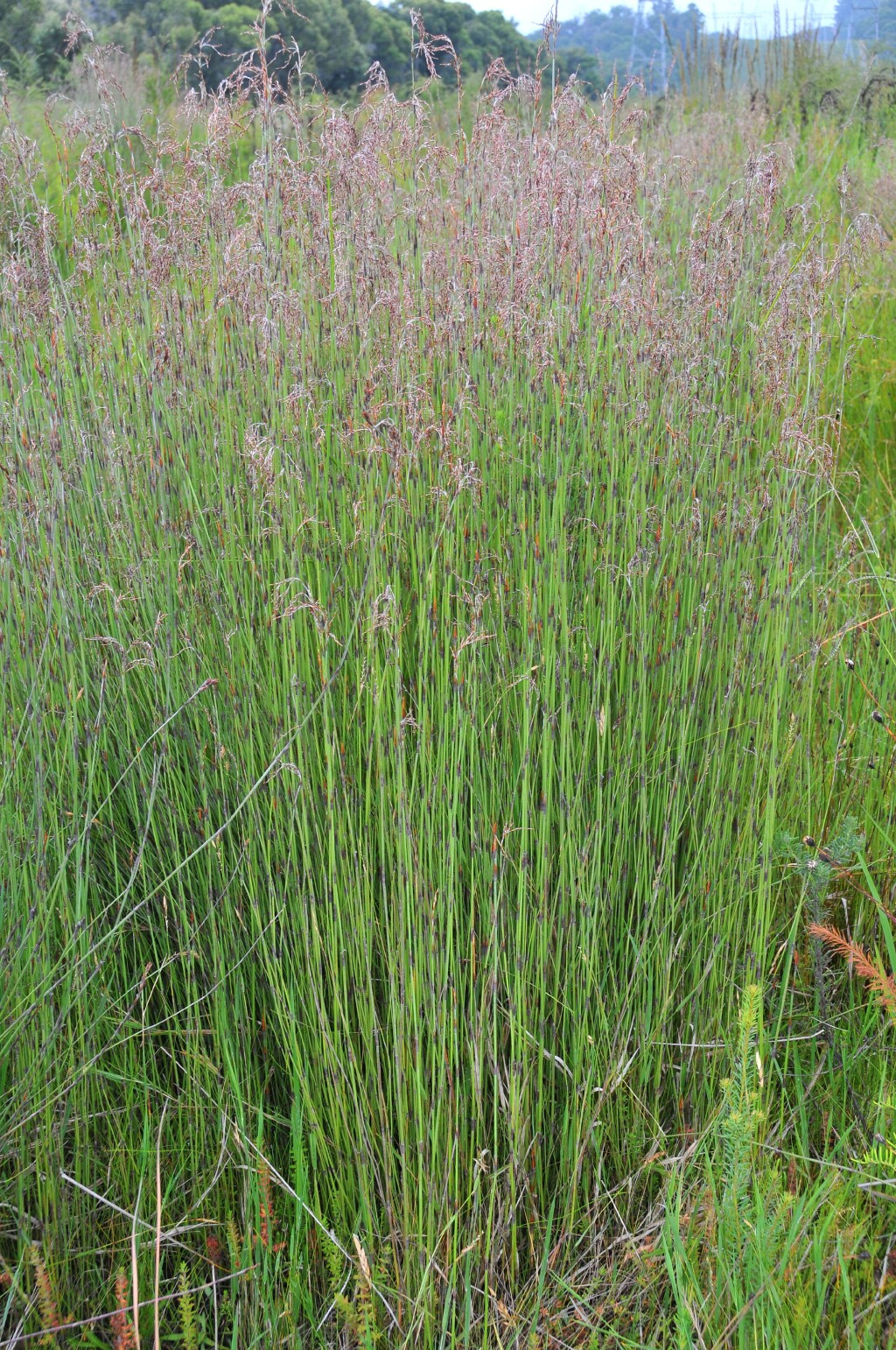Leptocarpus tenax
(Labill.) R.Br. Slender Twine-rushRhizome shortly creeping, glabrous, pale, partly covered with closely imbricate, dry and membranous scales. Stems 60–100 cm long, erect, straight, mostly unbranched, greyish-green. Sheathing leaves 5–12 mm long, brown, closely appressed, striate; margin membranous; apex obtuse or sometimes acuminate, soon eroded. Floral bracts of female spikelets as for sheathing leaves, apex acutely acuminate; floral bracts of male spikelets shorter than those of female spikelets. Male inflorescence arising from the distal axils of sheathing leaves, loose, drooping and panicle-like. Male spikelets 3–4(–5) mm long, immature spikelets narrower and longer than mature spikelets. Male flowers with staminal filaments short; anthers not or just exserted. Female inflorescence arising from the distal axils of sheathing leaves, racemose or narrowly paniclelike. Female spikelets almost sessile, 5–15 mm long. Female flowers with perianth longer than ovary; style branches free on distal half, exserted and straight to slightly recurved or spreading. Flowers throughout year, mainly Sep.–Nov.
MuM, Wim, GleP, VVP, GipP, OtP, WaP, GGr, DunT, EGL, EGU, WPro, HSF, Strz. All states except NT. Occurs in sandy soil in dry and swampy heath-lands of far western Victoria and Gippsland.
Conn, B.J. (1994). Restionaceae. In: Walsh, N.G.; Entwisle, T.J., Flora of Victoria Vol. 2, Ferns and Allied Plants, Conifers and Monocotyledons, pp. 179–190. Inkata Press, Melbourne.
 Spinning
Spinning



